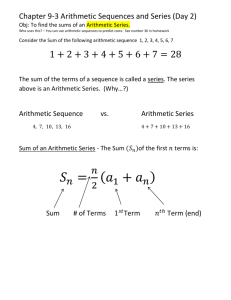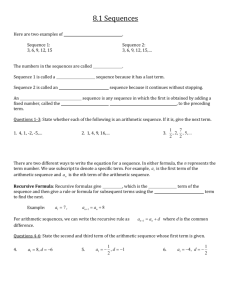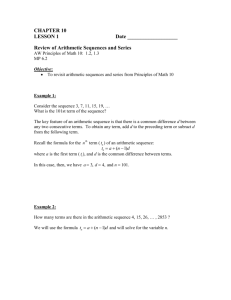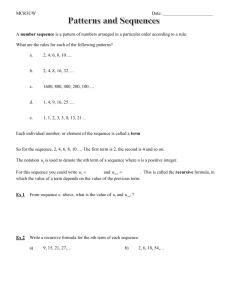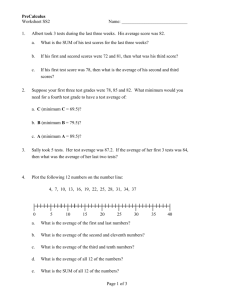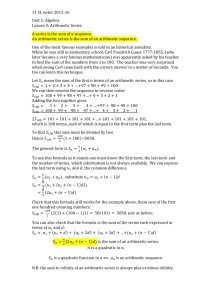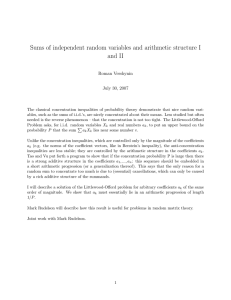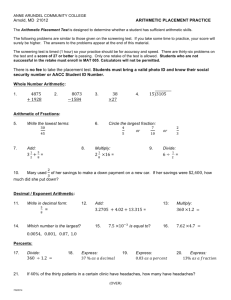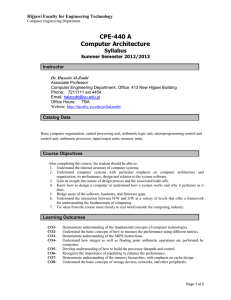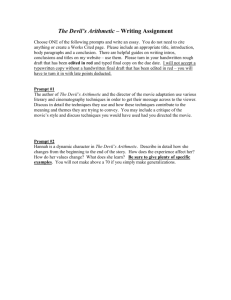Day 3 - Lesson - Sigma Notation and Series
advertisement
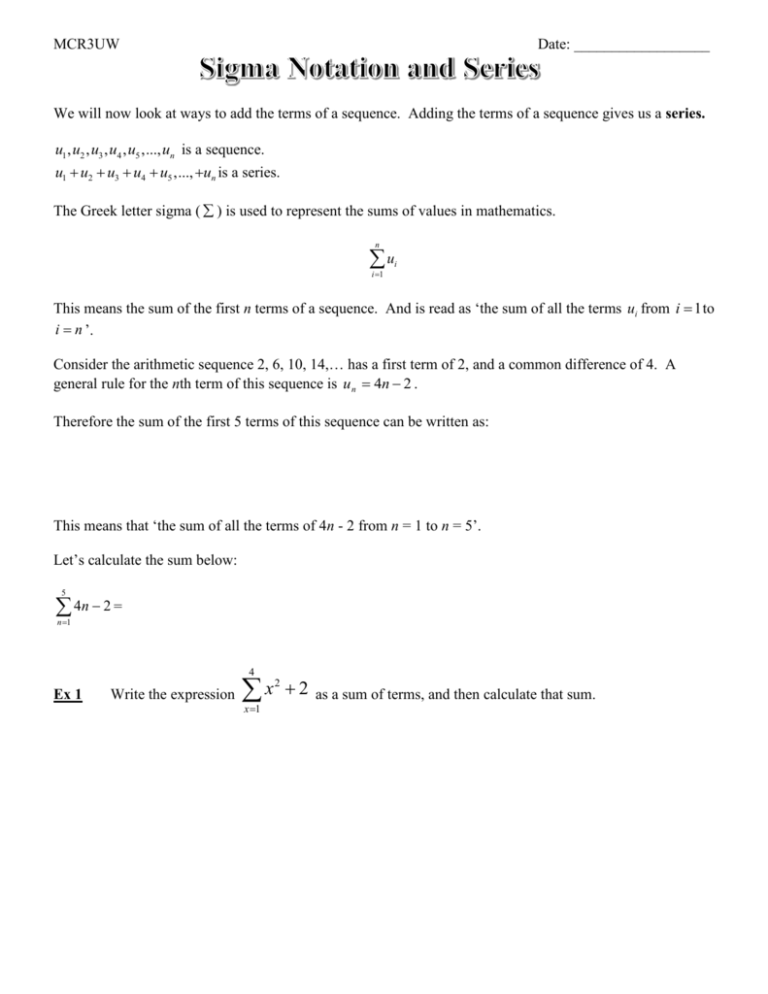
MCR3UW Date: __________________ We will now look at ways to add the terms of a sequence. Adding the terms of a sequence gives us a series. u1 , u2 , u3 , u4 , u5 ,..., un is a sequence. u1 u2 u3 u4 u5 ,..., un is a series. The Greek letter sigma ( ) is used to represent the sums of values in mathematics. n u i 1 i This means the sum of the first n terms of a sequence. And is read as ‘the sum of all the terms ui from i 1 to i n ’. Consider the arithmetic sequence 2, 6, 10, 14,… has a first term of 2, and a common difference of 4. A general rule for the nth term of this sequence is u n 4n 2 . Therefore the sum of the first 5 terms of this sequence can be written as: This means that ‘the sum of all the terms of 4n - 2 from n = 1 to n = 5’. Let’s calculate the sum below: 5 4n 2 = n 1 4 Ex 1 Write the expression x x 1 2 2 as a sum of terms, and then calculate that sum. 6 Ex 2 Evaluate the expression 2 a a 3 Ex 3 Write the series 2 + 10 + 50 + 250 + 1250 + 6250 using sigma notation. Arithmetic Series The sum of the terms in an arithmetic sequence is called an arithmetic series. When a series has only a few elements (like above), calculating the sum is not a difficult task. However if a series has 50, or 75, or 100 terms, it would be very time-consuming to add all these terms. It will be helpful to find a rule, or formula for evaluating arithmetic series. S n denotes the sum of the first n terms of a series. For a series with n terms, Sn u1 u2 u3 u4 u5 ,..., un For an arithmetic series, this would be: Another way to look at this (by reversing the order, and starting with the biggest term would be: If we then add these two equations together vertically (like in elimination with a system) we get: We can simplify this to: And when we divide both sides by 2 we get: If we substitute un u1 (n 1)d , we get: In general, you can find the sum of the first n terms of an arithmetic series using the formula: Sn Ex 4 Ex 5 n n u1 un or Sn 2u1 (n 1)d 2 2 Calculate the sum of the first 15 terms of the series 28 + 22 + 16 + … Find the number of terms in the series 14 + 15.5 + 17 + 18.5 + … + 50. and then find the sum of the terms. Ex 6 Write an expression for S n , the sum of the first n terms of the series: 70 + 65 + 60 + … Then find the value for n, which Sn 0






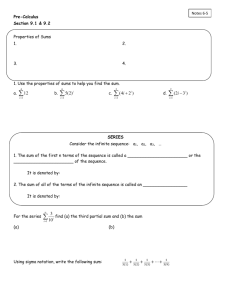



![Information Retrieval June 2014 Ex 1 [ranks 3+5]](http://s3.studylib.net/store/data/006792663_1-3716dcf2d1ddad012f3060ad3ae8022c-300x300.png)
